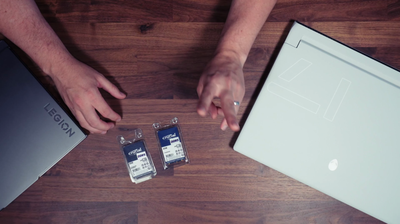
Trying out the Crucial 16GB DDR5-4800 CL40 RAM Kit (2024)
My thoughts on optimizing performance, ensuring compatibility, managing power efficiently, and assessing the value of Crucial DDR5 RAM.
Introduction
I recently decided to upgrade my desktop with the Crucial DDR5-4800 RAM, aiming for a noticeable improvement in performance. As someone who depends on their computer for gaming, coding, and video editing, optimal efficiency without excessive spending is key. In this article, I share my experience with the installation, the performance benefits, and the overall value of making this switch.
Some photos (click to enlarge)
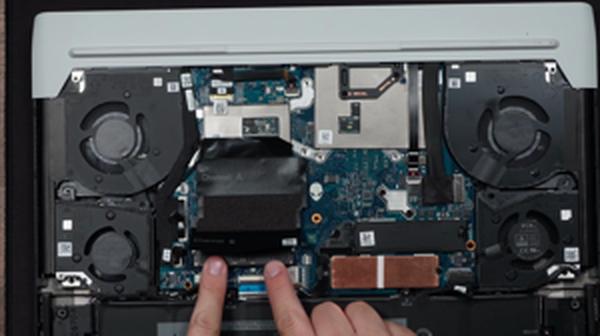
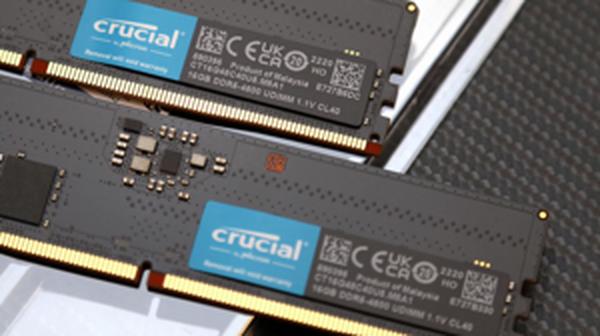
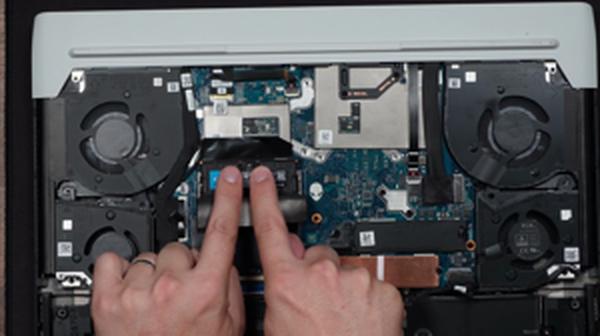

Specs of the Crucial 16GB DDR5-4800 CL40 RAM Kit
- Release Year
- Brand
- Compatible Devices
- Computer Memory Size
- Memory Speed
- Ram Memory Technology
Prices
Performance and Speed
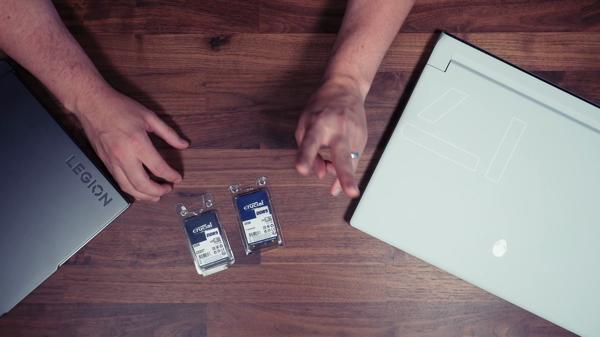
In the quest for peak desktop performance, the Crucial DDR5-4800 RAM makes a strong case for itself. From what I've experienced, the real-world implications of installing this kit are pretty substantial when you're chasing those extra frames per second in gaming or shaving seconds off heavy software load times. Here's a quick rundown from my perspective:
Speed Boost: There's no denying that jumping to 4800MT/s from older DDR4 RAM gives your system a noticeable quickness in daily tasks.
Frame Rate Gains: For gamers, frame rates can soar, especially in titles that are sensitive to RAM speeds.
Hefty Bandwidth: Nearly double the bandwidth of DDR4 means multitasking is smoother, and data-intensive tasks are less of a headache.
On the flip side, it's not without minor setbacks. For one, the CAS Latency (CL) of 40 might not be the best out there. Lower CL numbers typically mean faster memory operations, so while the speed is great, it's not the absolute best for latency.
Despite this, consistency appeals to me; the kit has been rock-solid in stability since installation. Moreover, the ease of enabling Intel's XMP 3.0 for instant performance recovery reassured me that I was getting the most out of my investment without having to venture into the murky waters of manual overclocking.
Although it lacks the flair of RGB or stock heatsinks, which some might find disappointing, I appreciate the no-nonsense, performance-focused design. I'm not one to get caught up in aesthetics when it comes to RAM, as long as the performance is there – and with the Crucial DDR5-4800, it definitely is.
Coding, gaming, video editing – you name it, this RAM kit has kept pace with everything I've thrown at it, and then some. It's like having a reliable workhorse under the hood, one that assures you that no matter the workload, your system won't buckle.
To wrap this up, the Crucial DDR5-4800 RAM has earned its place in my system. Sure, the CL40 could be better, but the overall performance uplift over DDR4 makes this a minor gripe. Ultimately, the speed and stability shine through, propelling my desktop's potential to new heights. For those looking to enhance their system without breaking the bank, this DDR5 kit is a compelling choice.
Compatibility and Installation

When it comes to upgrading my desktop with Crucial DDR5-4800 RAM, the compatibility and installation process played a crucial role. Here's what stood out to me:
Ease of installation: Simply put, popping these sticks into the available DIMM slots was a breeze. No sweat affair – open the case, click the RAM into place, and off you go. Any DIY PC builder or upgrader would appreciate this plug-and-play aspect.
Motherboard compatibility: My motherboard had to support DDR5, and it's vital to check this beforehand. Utilities like Crucial's Memory Finder are lifesavers for confirming compatibility.
CPU limitations: This RAM is built for the latest tech, meaning that the processor in the system needed to be modern enough to utilize the DDR5 potential effectively. Keep this in mind to avoid any bottlenecks.
A slight inconvenience, though, was the nuanced compatibility with existing RAM. You need to make sure that any RAM you're adding matches in terms of specifications, like speed and CAS Latency, to avoid system conflicts.
My Personal Experience:
With my build, I ensured that my motherboard’s firmware was up-to-date. Getting the system to recognize the added memory was straightforward with Windows 10. In my HP tower, the additional RAM slots were unoccupied, making it a simple case of just clicking in the new sticks. No need to juggle with the placement of existing modules.
However, not all experiences were seamless. For instance, trying to mix match this RAM with different brands or clock speeds brought up issues – like the PC refusing to post. A reminder that purchasing identical kits can save you a headache.
Here's a quick rundown of what to consider if you're thinking the same upgrade path:
Check if your motherboard and CPU are DDR5 compatible.
Update your BIOS/UEFI firmware to the latest version to ensure support for new memory standards.
Make sure to match the RAM specifications (speed, size, CAS latency) to your existing setup if not replacing all modules.
If upgrading a branded PC like Dell or HP, be aware of potential compatibility constraints – they can be finicky about non-OEM parts.
In the end, this upgrade has felt like a smooth transition. The caveat to watch for is ensuring compatibility throughout your system, especially in a mixed environment of old and new components.
Efficiency and Power Management

When I upgraded my desktop with the Crucial DDR5-4800 RAM, I was really looking for ways to maximize efficiency and future-proof my system. The DDR5 technology brings some serious improvements in the power management department, which is clutch for keeping the system stable and energy-efficient, particularly with those new multi-core CPUs that are power hungry.
So here’s what stood out to me about efficiency and power management with DDR5:
On-Module Voltage Regulation: Previous RAM generations rely on the motherboard for this, right? But now, DDR5 brings the party straight to the DIMM with a Power Management Integrated Circuit (PMIC). This tightens up voltage regulation and, theoretically, should give us more stability and efficiency.
Lower Operating Voltage: We're talking 1.1V for DDR5 compared to DDR4's 1.2V. Sure, it doesn't sound like a lot, but in a world where we're pinching every watt, this adds up to less heat and better power consumption.
Reduced Latency: Now, the system latency uptick is minimal (only up to 3% longer in tests) compared to DDR4, which is barely noticeable, but it's still a trade-off for that 2x bandwidth gain.
I’ve always respected Crucial for their reliability and straightforward compatibility. They're not trying to be the fanciest on the market, but they consistently deliver quality parts that do the job well. However, onboard power management does mean there's more complexity on the RAM itself—so while that's great for power handling, it does make me wonder about the potential repair costs or complications if something goes sideways. If you're interested in seeing how a set of Crucial RAM performs, you can check out my experience in Trying out the Crucial Pro 32GB DDR5-5600 RAM Kit.
It’s worth noting that while these modules are a step towards more efficient power usage, the real-world impact on your electricity bill is going to be small. For most of us, it’s the performance gains that’ll be more apparent day-to-day rather than the savings on our energy costs. But, over the lifespan of a desktop that’s running day in, day out, these little improvements are part of a larger trend towards sustainability and efficiency.
Overall, this upgrade feels like a smart choice. I'm minimizing energy loss and maximizing performance without breaking the bank. Despite the few potential drawbacks, like compatibility concerns with CPU and motherboard and the infancy of DDR5 technology, the perks of improved efficiency and lower operating voltage make it a worthwhile investment, especially when thinking long-term. Plus, who doesn't like their rig running a little cooler? That alone is a big win in my book.
Value and Cost-Efficiency

When it comes to upgrading my desktop with the Crucial DDR5-4800 RAM, I'm left weighing the balance between cost-efficiency and cutting-edge technology. Considering value is paramount, especially when you're trying to make a sizable leap in your system's performance without breaking the bank. I've put together a few key points to outline where this RAM kit hits the mark and where it might fall short:
Price Point: One of the most attractive aspects is the price. It's a relatively affordable entry into the DDR5 category.
Capacity: With a 16GB kit, it's a decent upgrade for everyday computing and some gaming.
Speed: The 4800MT/s isn't the fastest, but it's a significant step up from DDR4, offering a noticeable increase in speed for many tasks.
But it's not all perfect. The drawbacks, while few, are worth noting:
Compatibility: You'll need a DDR5-capable motherboard and CPU, so it's not a universal fit.
No Heatsink: The lack of a heatsink may be an issue for some users, particularly if they’re working in a high-temperature environment or they plan to push their system to its limits.
Investing in the Crucial DDR5-4800 RAM has proven to be a savvy move for my needs. The key trade-off here is between top-of-the-market performance versus value, and for my part, the balance tips toward value. I'm not chasing the absolute peak of RAM speeds, which commands a premium price, and for the use-cases most typical to my day-to-day — like streaming, video editing, and gaming — I'm getting results that are more than satisfactory with this RAM.
As someone who appreciates products that offer a good cost-to-performance ratio, this RAM strikes a chord. Sure, there's faster RAM out there, but the gains might not justify the cost for everyone. For the majority of users, the benefits of ultra-fast, high-priced RAM would be imperceptible compared to what you get from a kit like this. I've come to appreciate that my system runs smoothly and handles all the tasks I throw at it, which is ultimately the goal of an upgrade. By not opting for top-tier speeds, I've allocated budget elsewhere in my build — like towards a better GPU or more storage.
It's also heartening to see that the lack of extras, like a fancy heatsink, doesn’t negatively impact the Crucial's performance in a well-ventilated case. Moreover, its compatibility with both Intel and AMD setups means I have flexibility down the line should I decide to switch sides in the CPU wars.
In summary, for users looking to balance cost with a significant step up in potential, the Crucial DDR5-4800 kit is a solid investment. It doesn't push the envelope in terms of sheer speed or flashiness, but it delivers where it counts, ensuring I can multitask, game, and work without hiccups — all at a price that feels reasonable.
Comments (0)
Share